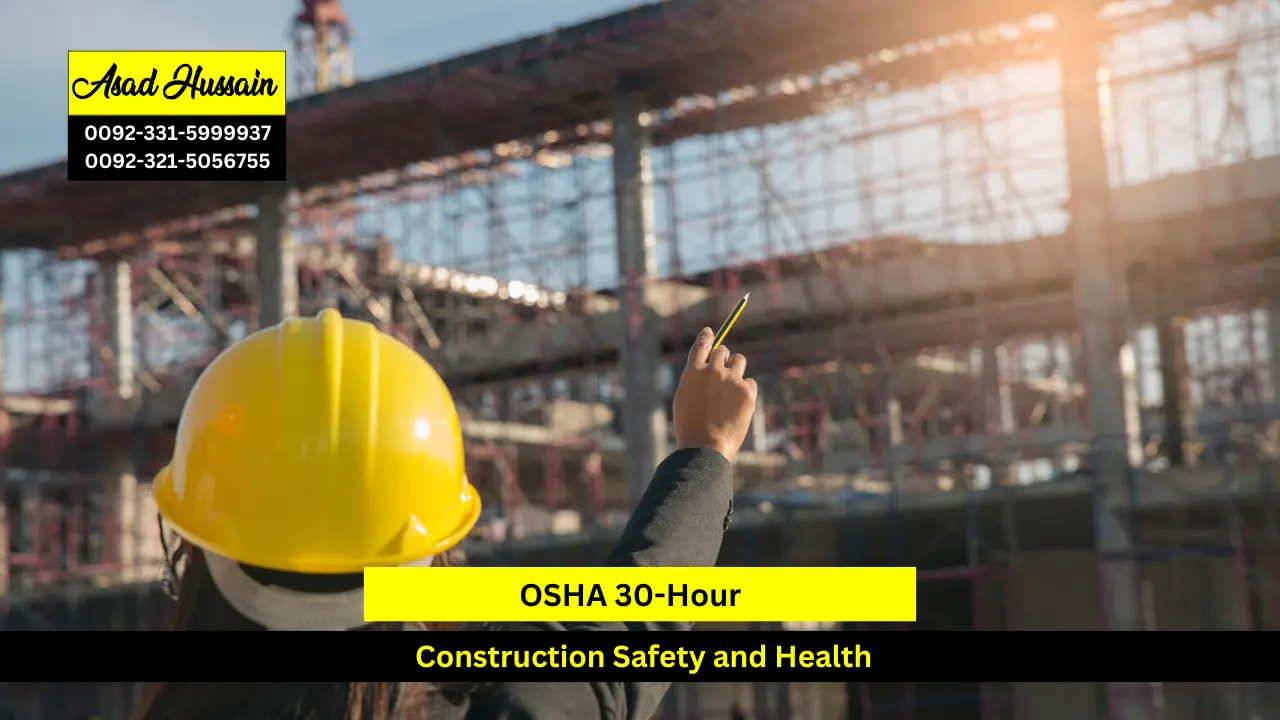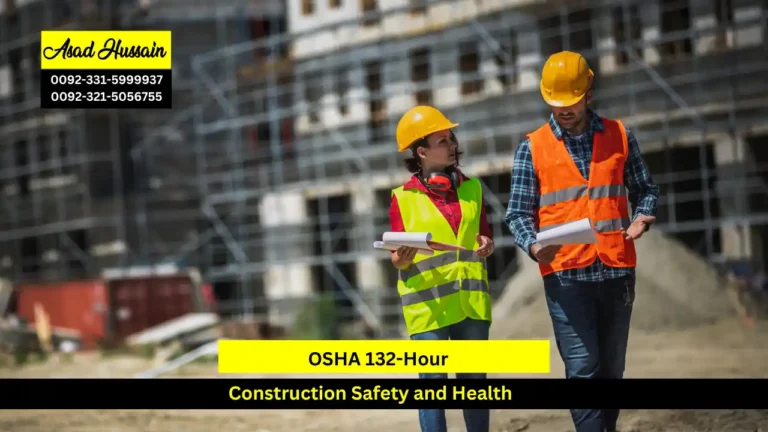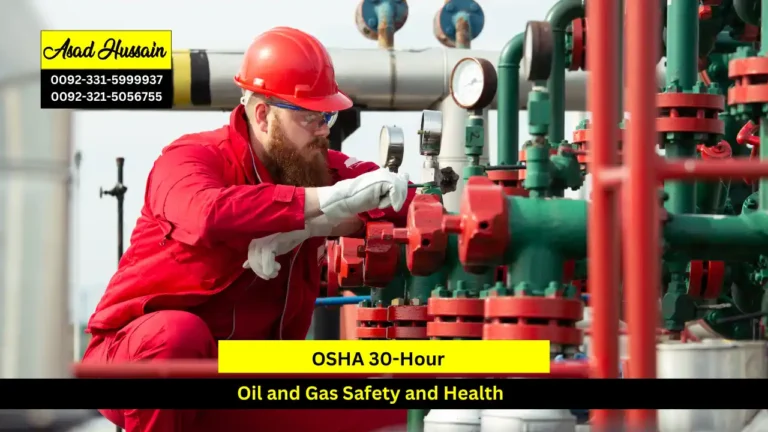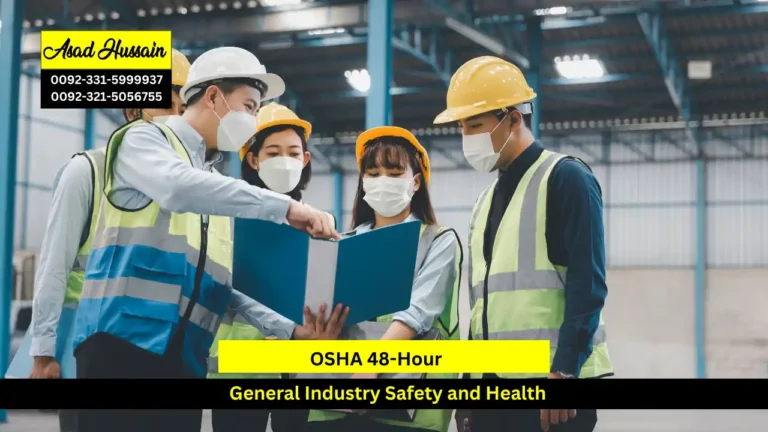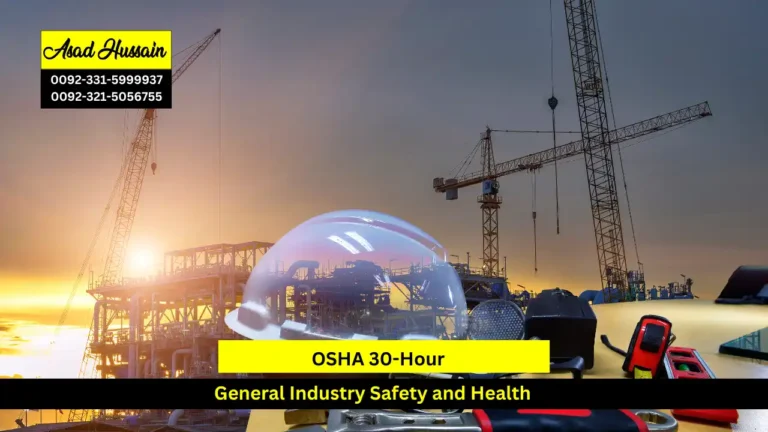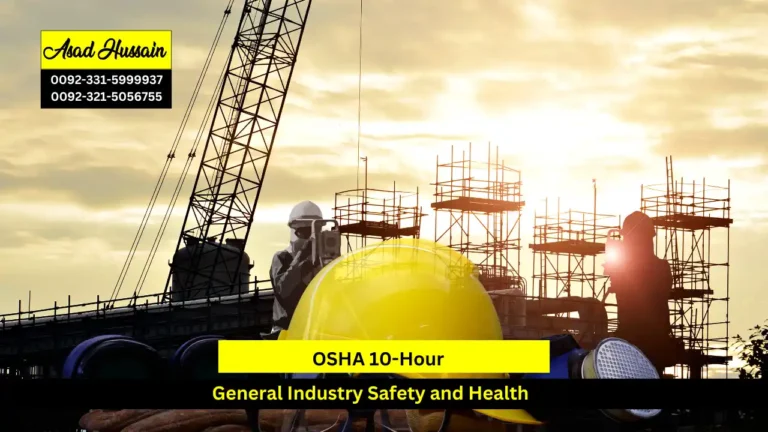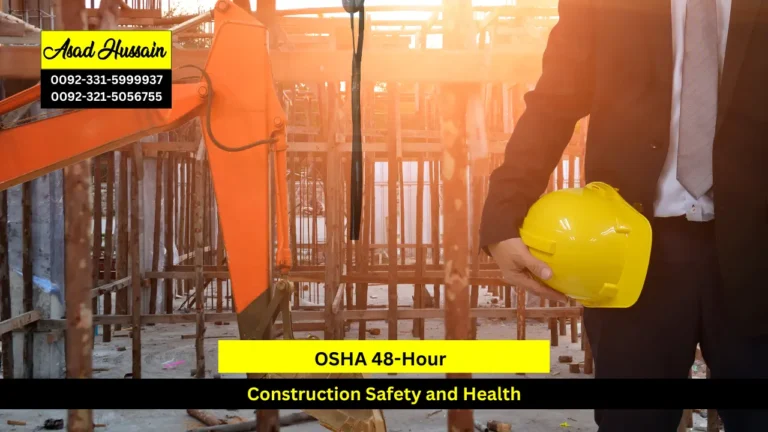In the ever-evolving landscape of construction, safety is paramount. Ensuring that construction workers and managers are well-versed in safety practices is crucial for preventing accidents and maintaining a safe work environment. One of the most recognized and comprehensive training programs in this regard is the OSHA 30-Hour Construction Safety and Health course. Here’s a detailed look at what this course entails and why it’s essential for construction professionals.
The OSHA 30-Hour Construction Safety and Health course is an invaluable resource for anyone involved in the construction industry. By providing comprehensive training on safety standards and practices, this course plays a crucial role in preventing accidents, ensuring compliance, and fostering a culture of safety. Whether you’re a supervisor, project manager, or construction worker, investing time in this course can lead to significant improvements in workplace safety and overall project success.
Program Highlights
Mandatory Units
- Introduction to OSHA
- Managing Safety and Health
- Focus Four Hazards
- Personal Protective Equipment (PPE)
- Health Hazards in Construction
- Cranes and Rigging
- Stairways and Ladders
- Confined Spaces
- Excavations
- Scaffolds
- Fire Protection and Prevention
- Electrical Safety
- Materials Handling, Storage, Use, and Disposal
- Hand and Power Tools
- Welding and Cutting
- Motor Vehicles, Mechanized Equipment, and Marine Operations
Ergonomics - Concrete and Masonry Construction
- Steel Erection
- Safety and Health Programs
Basic Literacy and Numeracy
Participants should possess basic literacy and numeracy skills. The course involves reading safety materials, understanding regulations, and applying numerical data related to safety practices, so a fundamental level of these skills is necessary.
Interest in Construction Safety
While there are no formal educational prerequisites, participants should have a genuine interest in construction safety and health. This course is particularly beneficial for those who are directly involved in the construction industry or those looking to improve safety standards within their organization.
Work Experience
Although not always mandatory, having some experience in the construction industry can be advantageous. This course is tailored for individuals in supervisory or management roles, so familiarity with construction practices and challenges will help participants better understand and apply the safety concepts taught.
Commitment to Completing the Course
The OSHA 30-Hour course requires a significant time commitment, typically spanning 30 hours of instruction. Participants should be prepared to dedicate the necessary time to complete the course, which may be offered in various formats such as in-person, online, or a combination of both.
No Formal Prerequisite Certifications
There are no formal prerequisites in terms of prior certifications or courses required to enroll in the OSHA 30-Hour course. However, it is recommended that participants have a basic understanding of general safety practices and workplace safety.
Proficiency in English (for Non-Native Speakers)
For non-native English speakers, proficiency in English is important as the course materials and instruction are typically delivered in English. Participants should be able to understand and communicate effectively in English to fully engage with the course content.
Age Requirement
Participants must generally be at least 18 years old to enroll in the OSHA 30-Hour course. This ensures that attendees are mature enough to grasp and apply the safety principles covered in the training.
Technical Requirements for Online Courses
If opting for an online format, participants should have access to a computer with a stable internet connection and basic technical skills to navigate online learning platforms. Some courses may require specific software or hardware configurations, so checking the technical requirements beforehand is advised.
Introduction to OSHA
- Understand the role and mission of OSHA in promoting workplace safety and health.
- Identify key OSHA regulations and standards applicable to the construction industry.
- Explain the rights and responsibilities of employers and employees under OSHA regulations.
- Describe the process for OSHA inspections, citations, and appeals.
Managing Safety and Health
- Develop and implement effective safety and health programs in the workplace.
- Recognize the importance of safety management systems and their components.
- Apply risk assessment techniques to identify and mitigate hazards.
- Implement strategies for effective communication and training on safety and health issues.
Focus Four Hazards
- Identify and understand the four leading causes of construction-related fatalities: falls, electrocutions, struck-by incidents, and caught-in/between hazards.
- Implement preventive measures and best practices to address these hazards.
- Conduct hazard assessments and develop control plans to minimize risks.
Personal Protective Equipment (PPE)
- Select and use appropriate PPE for various construction tasks and hazards.
- Understand the proper maintenance, inspection, and replacement of PPE.
- Educate workers on the correct use of PPE and the importance of compliance with PPE regulations.
Health Hazards in Construction
- Identify common health hazards in construction, such as noise, dust, and chemical exposures.
- Implement control measures to minimize exposure to health hazards.
- Develop and enforce health monitoring programs to protect worker health.
Cranes and Rigging
- Understand the safe operation and inspection of cranes and rigging equipment.
- Identify and manage hazards associated with crane operations and rigging.
- Apply safe practices for lifting, hoisting, and securing loads.
Stairways and Ladders
- Inspect and maintain stairways and ladders to ensure they meet safety standards.
- Implement safe practices for the use and setup of stairways and ladders.
- Recognize and address common hazards related to stairways and ladders.
Confined Spaces
- Identify the types of confined spaces and associated hazards in construction.
- Develop and implement confined space entry procedures and emergency plans.
- Ensure proper training and use of equipment for safe entry and work in confined spaces.
Excavations
- Understand the hazards associated with excavation work and implement control measures.
- Apply techniques for trench safety, including shoring, shielding, and sloping.
- Develop and follow excavation plans to prevent accidents and ensure worker safety.
Scaffolds
- Identify different types of scaffolding and their uses in construction.
- Implement safe erection, use, and dismantling practices for scaffolding.
- Conduct regular inspections and maintenance to ensure scaffold safety.
11. Fire Protection and Prevention
- Recognize fire hazards and implement fire prevention strategies on construction sites.
- Develop and maintain fire protection systems, including fire extinguishers and alarms.
- Educate workers on fire safety procedures and emergency response plans.
Electrical Safety
- Understand electrical hazards and the safety practices required to manage them.
- Implement proper procedures for working with electrical systems and equipment.
- Conduct inspections and maintenance of electrical systems to prevent accidents.
Materials Handling, Storage, Use, and Disposal
- Develop and implement safe procedures for handling, storing, and disposing of construction materials.
- Recognize hazards associated with material handling and apply control measures.
- Educate workers on safe practices and the proper use of equipment for material handling.
Hand and Power Tools
- Identify common hand and power tools and their associated hazards.
- Implement safe operating procedures for using and maintaining tools.
- Conduct regular inspections to ensure tools are in good working condition.
Welding and Cutting
- Understand the hazards associated with welding and cutting operations.
- Apply safety measures and protective equipment to minimize risks.
- Follow safe practices for operating welding and cutting equipment.
Motor Vehicles, Mechanized Equipment, and Marine Operations
- Recognize the hazards associated with motor vehicles, mechanized equipment, and marine operations in construction.
- Implement safety procedures for the operation and maintenance of vehicles and equipment.
- Develop and follow protocols for safe marine operations, if applicable.
Ergonomics
- Identify ergonomic hazards and their impact on worker health and safety.
- Implement ergonomic practices to reduce strain and prevent musculoskeletal disorders.
- Educate workers on ergonomic principles and proper techniques to minimize injury.
Concrete and Masonry Construction
- Understand the hazards associated with concrete and masonry work.
- Implement safety measures for mixing, handling, and curing concrete and masonry materials.
- Apply safe practices for working with concrete forms, scaffolding, and equipment.
Steel Erection
- Recognize the hazards associated with steel erection and implement safety controls.
- Follow safe practices for the erection and securing of steel structures.
- Ensure proper training and use of equipment for steel erection tasks.
Safety and Health Programs
- Develop, implement, and evaluate comprehensive safety and health programs.
- Promote a safety culture and ensure ongoing compliance with safety regulations.
- Conduct regular audits and assessments to identify areas for improvement in safety and health practices.
The OSHA 30-Hour Construction Safety and Health course is designed for a diverse range of professionals within the construction industry who are committed to enhancing workplace safety and health. This includes construction managers, supervisors, safety officers, and workers who seek a comprehensive understanding of OSHA standards and best practices. It is particularly beneficial for individuals in leadership roles who are responsible for overseeing safety programs and ensuring compliance with regulatory requirements. Additionally, the course is valuable for anyone involved in construction projects who wants to deepen their knowledge of safety protocols, mitigate risks, and contribute to a safer working environment. By providing detailed training on managing safety, handling specific hazards, and implementing effective safety programs, this course equips participants with the skills and knowledge needed to create and maintain a safe and compliant construction site.

